What was once regarded mainly as a terrifying apex predator of the seas, research into great white sharks has revealed fascinating facts about this remarkable species. As one of the largest predatory fish—second only to the whale shark–great whites have always captivated our imagination with their size and power.
But perhaps even more intriguing than their immense size is what we’ve learned about these oceanic giants: top-level predators play critical roles in maintaining healthy ecosystems, with great white sharks being keystone predators that help balance entire marine communities.
From hunting behaviors to peculiar social interactions, there is much left for us to explore and discover on our journey to understanding these mysterious creatures of the deep sea.

Skip ahead to any section below!
Introducing The Great White shark – its Characteristics and Mysterious Behavior
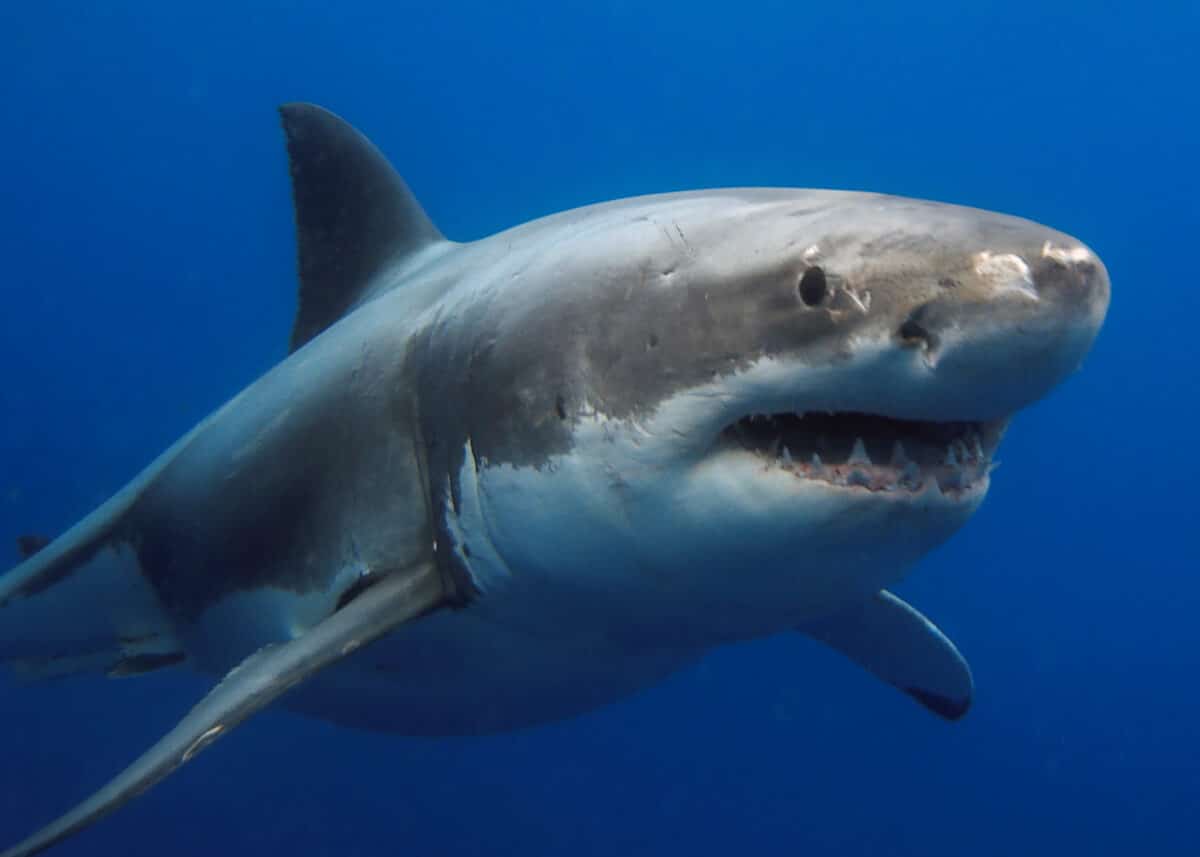
The great white shark, a majestic and intriguing ocean predator, has fascinated people for generations due to its immense size, power, and enigmatic behavior.
- Great white sharks are massive, reaching lengths of up to 20 feet and weighing over 5,000 pounds. They have a distinct white underbelly and sharp teeth, ideal for tearing apart prey.
- Despite their fearsome reputation, they are elusive and challenging to study, leaving scientists with much to learn about their behaviors and movements.
- Great whites possess remarkable senses and instincts, allowing them to detect even faint scents of blood from miles away and precisely navigate the ocean.
- One of their most captivating behaviors is breaching out of the water, believed to be a hunting technique to catch prey off guard. They also circle before attacking, giving them a distinctive “shark stare.”
Check out: Whale Sharks.
Great White Sharks: Misunderstood Predators Inspiring Wonder
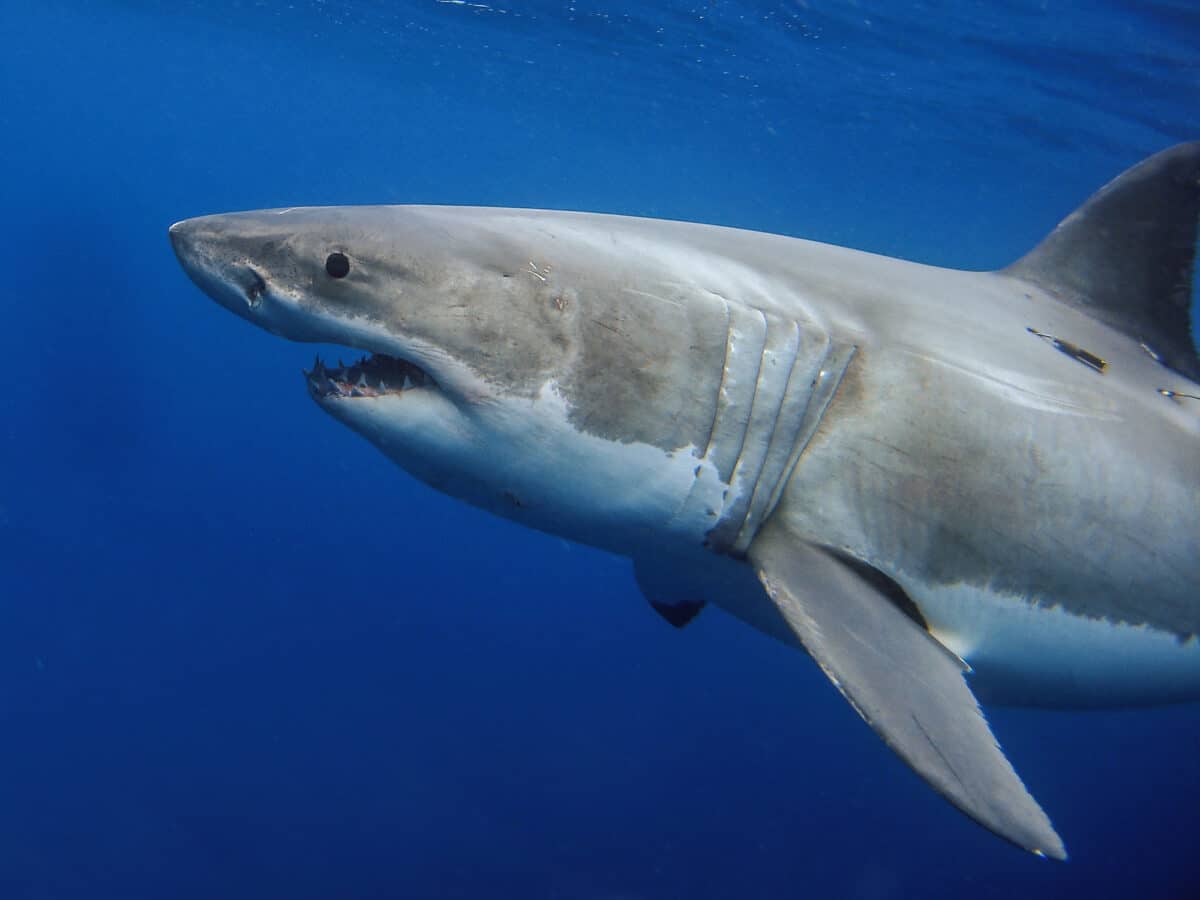
Contrary to popular belief, great white sharks are not typically aggressive toward humans. Attacks on humans by Great White Sharks are often a result of mistaken identity, where the sharks confuse humans for their natural prey. While caution is essential when encountering these creatures in the wild, it is undeniable that Great White Sharks can inspire awe and wonder in us. The great white shark symbolizes the magnificent and enigmatic creatures inhabiting our oceans.
Check out: Pacific Sleeper Shark.
Exploring Key Facts about Great White Sharks – Their Size, Diet, Lifespan, and More
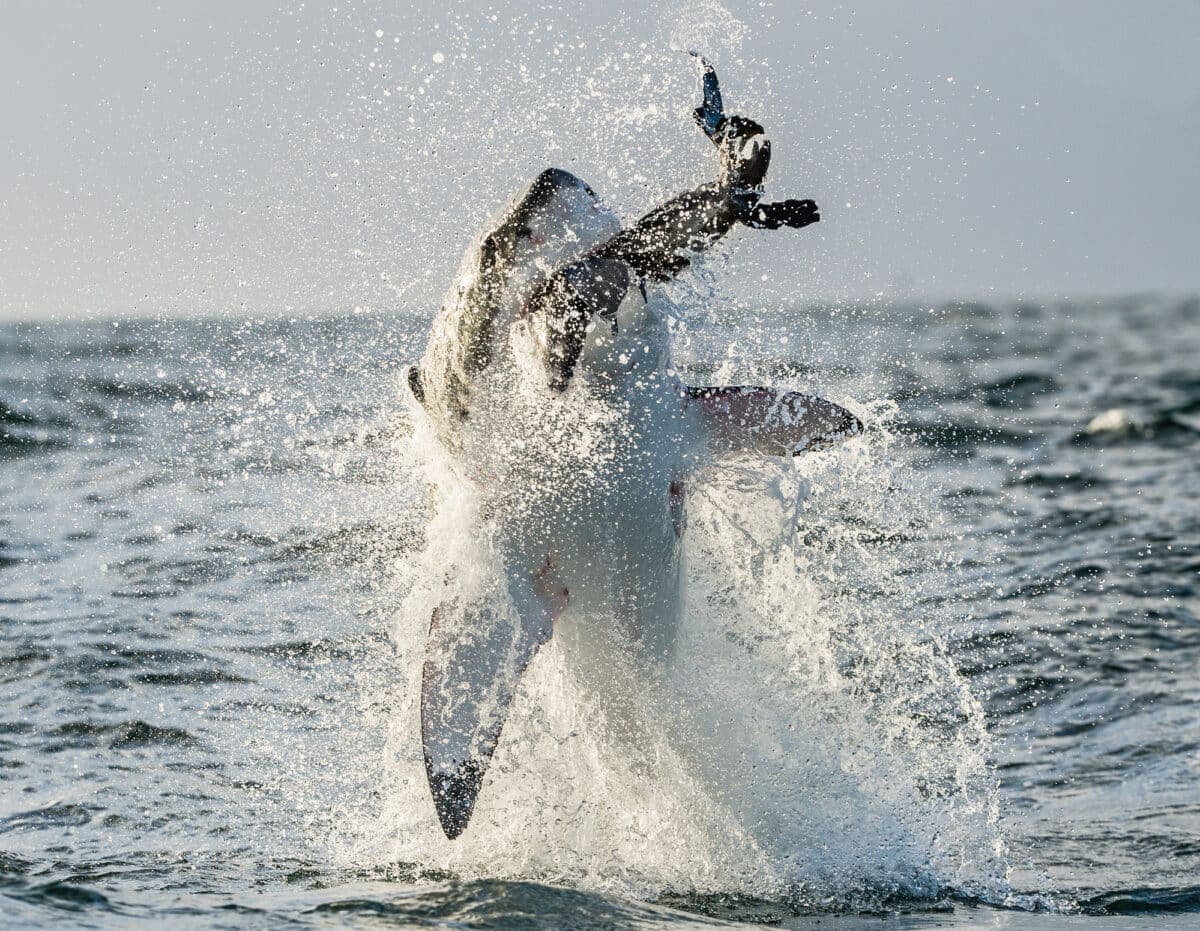
With their unmistakable silhouette and reputation as formidable predators, great white sharks remain one of the sea’s most fascinating creatures. But what do we know about these animals?
Size and Appearance
Great white sharks are one of the largest predatory fish on the planet, boasting lengths of up to 20 feet. Despite their size, they are also incredibly fast and agile, able to swim up to 60 km/h.
Great white sharks are easily recognizable due to their distinctive appearance, featuring a pointed snout, grayish-brown skin, and serrated triangular teeth that can grow up to 3 inches long.
Diet and Predatory Behavior
Great white sharks are carnivorous apex predators that mostly eat marine mammals like seals, sea lions, and various fish species such as tuna and herring. They are also known to scavenge on dead animal carcasses and have been observed attacking boats and diving cages.
Great white sharks are apex predators, holding the highest position in the food chain. Great white sharks play a crucial role in keeping the balance of the marine ecosystem.
Lifespan and Reproduction
The lifespan of great white sharks is believed to be around 30 to 40 years, with some individuals living up to 70 years. Their reproductive rate is slow, with females giving birth to only a few pups every two to three years. Great white sharks are oviparous, laying eggs that hatch internally before the puppies are born.
Behavior and Conservation Status
Great white sharks are brilliant and curious animals, with some individual sharks displaying complex social behaviors.
Additionally, they face threats from overfishing, habitat loss, and marine pollution, resulting in their classification as vulnerable species regarding conservation status. Protecting and conserving these magnificent creatures is vital to ensure their survival and the diversity of our oceans.
Unveiling the Lifecycle of a Great White Shark – from Egg to Adolescence
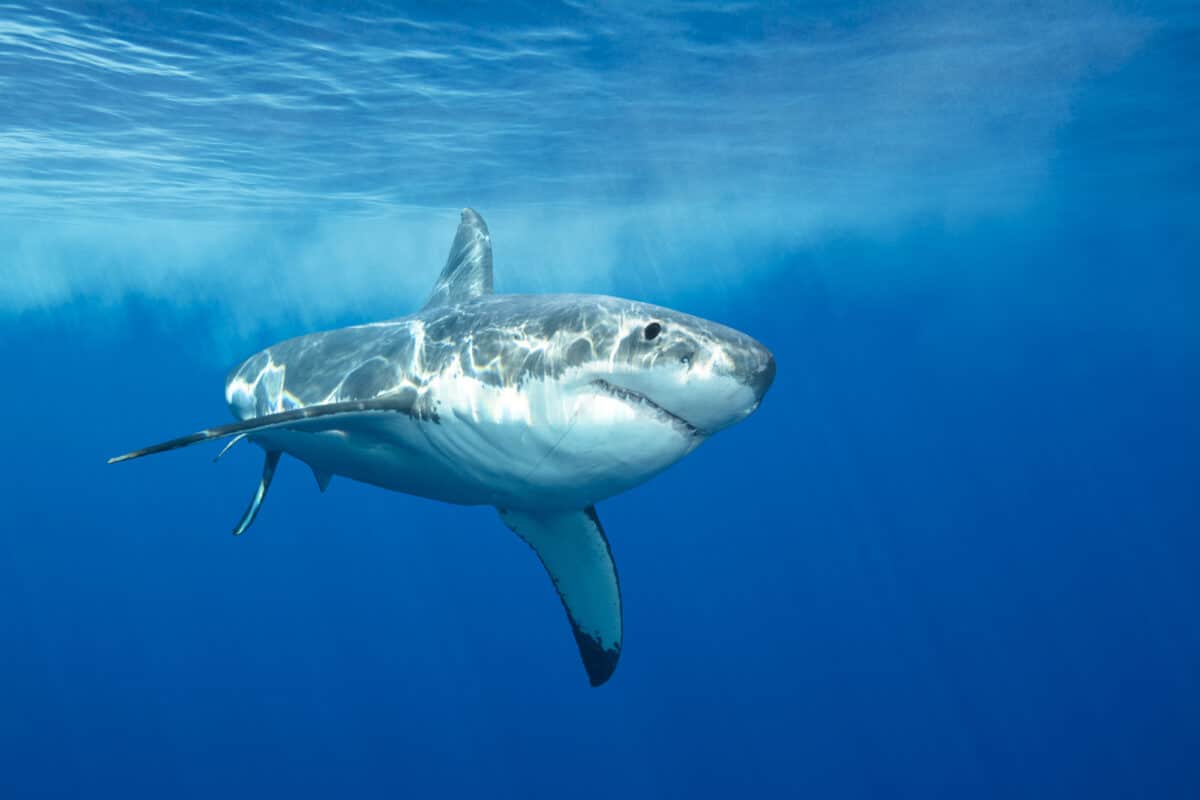
- Egg Stage
The life cycle of a Great White Shark begins with the laying of an egg, which is often done in shallow waters close to the shore. Females can lay anywhere from 2 to 14 eggs at a time, left unprotected to develop independently in the open waters for around 8-12 months.
- Hatching
Once they have hatched, the juvenile Great White Sharks can swim and hunt for small prey but are still vulnerable to larger predators in the ocean. As they mature and build strength, they learn new hunting and survival skills, such as hiding from predators and hunting larger prey.
- Adolescence
As they reach adolescence, Great White Sharks will have grown in size and strength, making them a formidable opponent for any animal in the ocean. Some researchers believe that adolescent Great Whites may be more prone to attacking humans due to confusion and inexperience.
Examining the Impressive Hunting Techniques of the Apex Predator: The Great White Shark
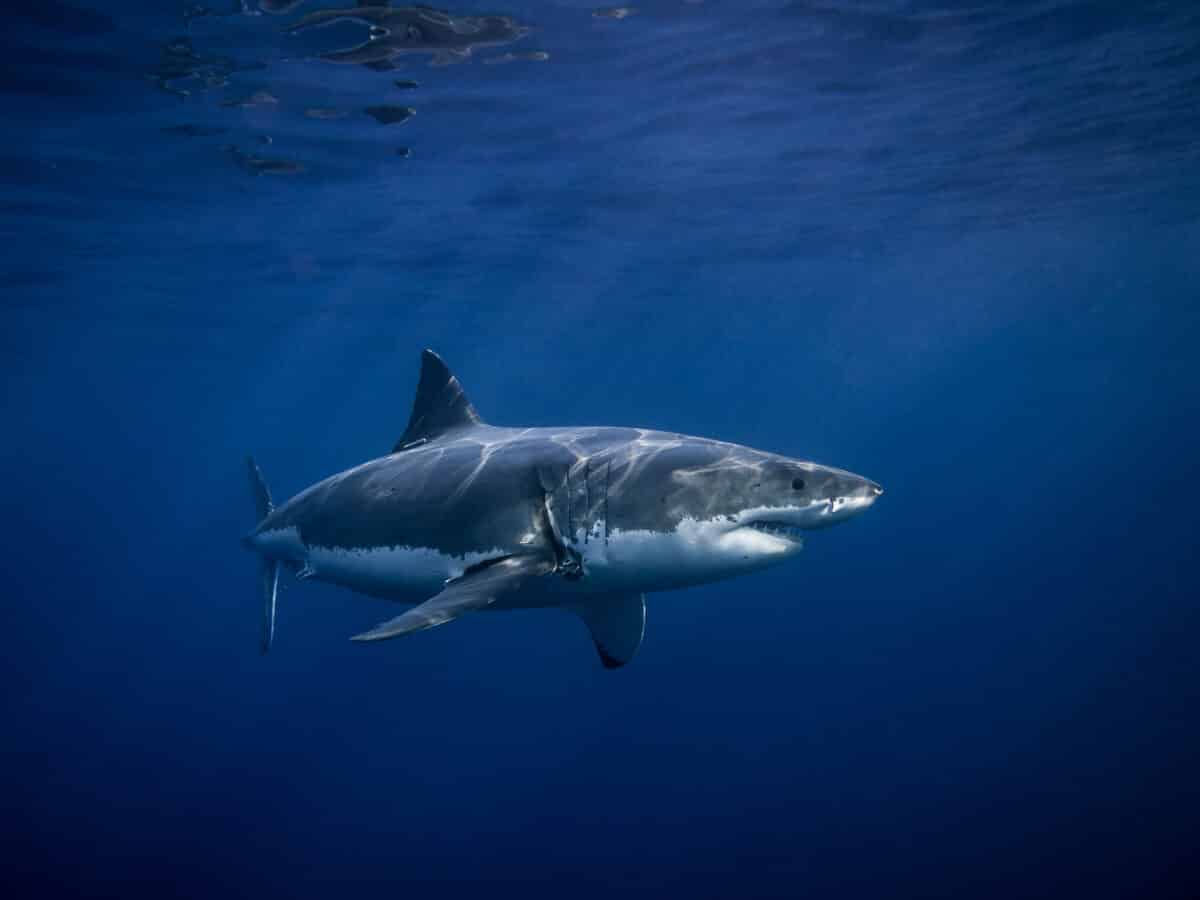
The Great White Shark, also known as the “King of the Ocean,” is undoubtedly one of the most impressive and terrifying creatures that inhabit our seas. They are known for their size and strength and revered for their hunting techniques. Great White Sharks are apex predators, occupying the top position in the food chain and demonstrating exceptional hunting abilities due to their evolution.
The Great White Shark employs three hunting techniques: “Ambush hunting” involves a quick approach from below to surprise and drag prey underwater. “Patrolling” includes circling prey until the right moment to strike. Lastly, the shark uses “breaching” to leap out of the water and catch the game by surprise, showcasing its remarkable skills.
Investigating How Climate Change is Affecting Great White Sharks and Other Ocean Life
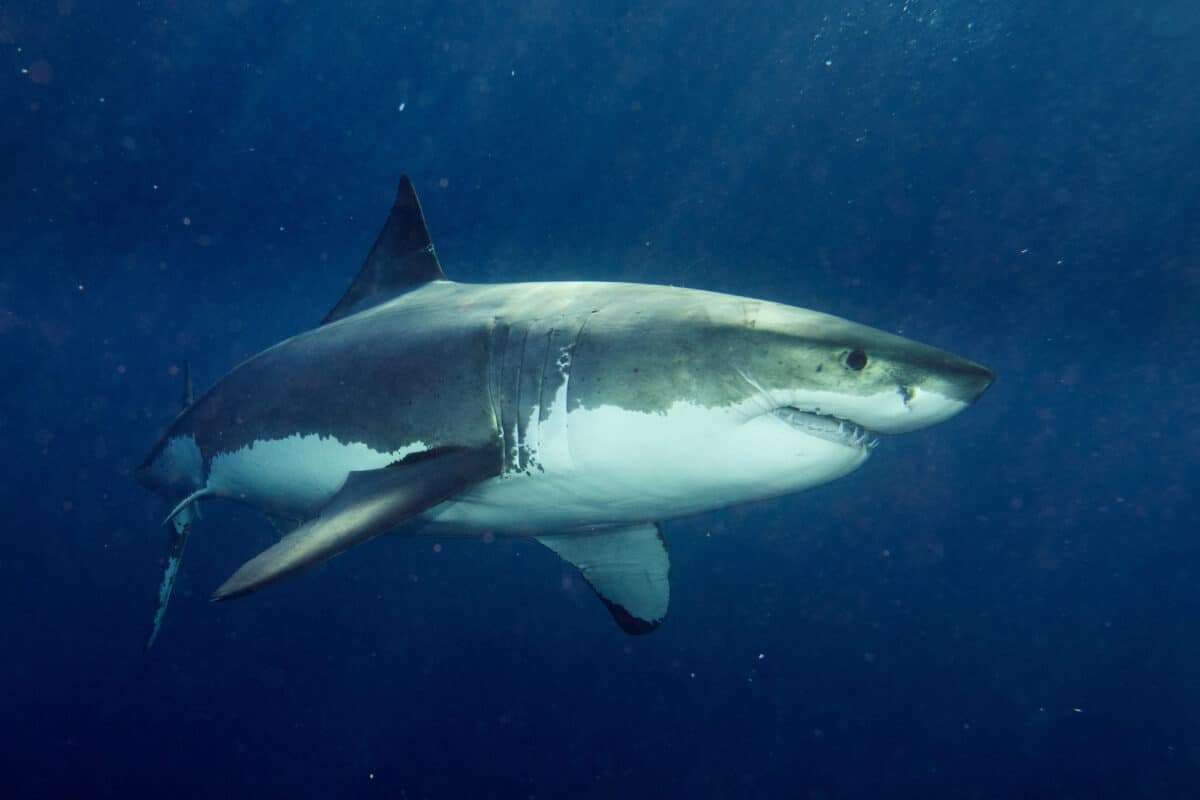
Climate change has significant effects on great white sharks and marine ecosystems. Increasing sea temperatures disrupt their habitats and prey distribution, forcing these top predators to adapt or move. Changes in ocean acidity also impact their senses, navigation, and food sources. Ocean acidification harms essential organisms like plankton and coral, affecting the entire marine food chain.
As climate change intensifies, the delicate ocean balance is in danger, affecting not just great white sharks but other marine species, potentially leading to food web disruptions and biodiversity loss. Immediate action is required to protect our oceans and its life.
Frequently Asked Questions
Great White Sharks are carnivorous predators and primarily feed on marine mammals, such as seals and sea lions. They also consume a variety of fish species, including tuna and herring. Their diet consists mainly of high-energy prey to sustain their large size and energy needs.
Great White Sharks are not typically aggressive toward humans and do not actively seek them out as prey. Attacks on humans are often a case of mistaken identity, where the shark confuses humans for their natural game. While encounters should be approached with caution, unprovoked attacks are rare.
Great White Sharks inhabit coastal and offshore waters worldwide, primarily in cool and temperate regions. They are commonly found in areas with abundant marine life. Such as seal and sea lion colonies, which serve as their primary food source.
Key Points
| Great white sharks are massive, reaching lengths of up to 20 feet and weighing over 5,000 pounds. They have a distinct white underbelly and sharp teeth, ideal for tearing apart prey. |
| Great white sharks are carnivorous apex predators that primarily feed on marine mammals like seals, sea lions, and various fish species such as tuna and herring. |
| Females can lay anywhere from 2 to 14 eggs at a time, left unprotected to develop independently in the open waters for around 8-12 months. |
| The Great White Shark, also known as the “King of the Ocean,” is undoubtedly one of the most impressive and terrifying creatures that inhabit our seas. |
| The Great White Shark employs three hunting techniques: “ambush hunting” involves a quick approach from below to surprise and drag prey underwater. “Patrolling” includes circling prey until the right moment to strike. |
Bottom Line
The great white shark has captivated us for generations, making our hearts pound and souls tremble. Despite their power and lethality, we must persist in safeguarding these predators from habitat loss. Which is caused by climate change and other environmental challenges.
We may never fully understand their behavior or lifecycle, but learning more about them gives us a better chance of keeping them around for future generations. We are stewards of this earth and are responsible for ensuring that all creatures, from the great white shark to lesser-known species like the puffins of Maine, continue to thrive in their wild habitats.
Together we can create lasting stewardship initiatives that protect the unique biodiversity of our oceans!
If you enjoyed this article as much as me, check out our related article links below!
Next up:
- French Bulldog
- Gorilla And Anaconda In Focus
- The English Bulldog
- Largest Asian Elephant
- The Largest Gorilla Ever Recorded
- Green Iguana Bites: 10 Essential Tips for Safe Pet Ownership
- How To Deal With A Bearded Dragon Bite
- The Northern Pacific Rattlesnake Bite
- Mighty Komodo Dragon Bite
- What To Do After A Red-Bellied Black Snake Bite
- How Can You Avoid Getting Bitten By A Yellow Sac Spider
- Watch: Lizard Greets Man like a Dog! - April 25, 2024
- Mama Deer Is So Worried About Her Baby - April 25, 2024
- Watch Innocent Baby Bird Walks up to Leopard – Wild Ending! - April 25, 2024



Douglas Taggart
Thursday 10th of August 2023
Very interesting but are mistaken on one thing orca are the top predators in the sea as as been documented orca pray on great White's